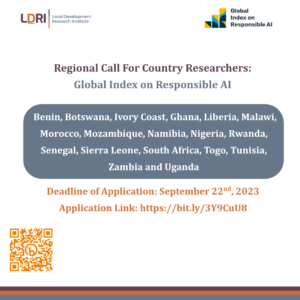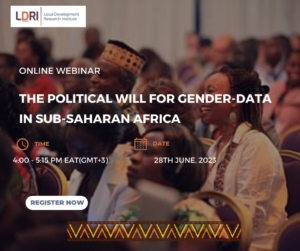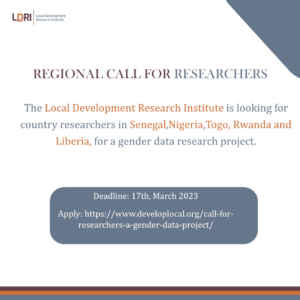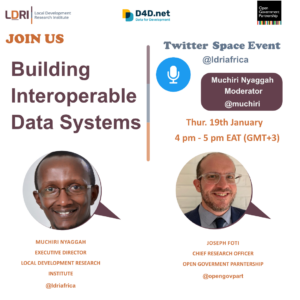AODN had a chance to meet with Claude Migisha from Rwanda, an AODN Fellow – 2019 on his perspectives on Open Data in his country.
The Data Revolution
The emergence of digital technologies has given rise to data sources and analytical methods, which were previously not possible. As a result, the production of data is increasingly becoming a deluge ushering humanity into what is referred to as “the data revolution” which is poised to reshape how knowledge is produced, business conducted and governance enacted.
The abundance of data being produced by governments, corporates and individuals has given rise to rather new concepts such as big data, open data and data infrastructures. Overall, it is believed that if further assembled, analysed and shared, these data volumes can be instrumental in the journey to achieve sustainable development. Not only the use of data from new and different sources provides real-time information, trends and behavioural patterns, it also provides new opportunities for decision making across the globe. Speaking of the data revolution, new data sources have attracted growing interests from National Statistical Institutes too. Given that these data have the potential to complement official and more conventional statistics, for instance, to determine progress towards the Sustainable Development Goals (SDGs) and other development targets, it is progressively acknowledged that approaches in traditional statistical practices have to be complemented by exploiting new and non-traditional data sources.
Open Data in the Data Revolution
According to the International Open Data Charter (ODC), open data is; “publicly available data that can be universally and readily accessed, used and redistributed free of charge. It is structured for usability and computability.” Globally, Open Data (OD) is recognised as a critical component of the data revolution because of three main reasons. First, OD paves the way for societal benefits. By making data open, companies and organisations can design and create new projects (i.e. improving public transport, providing better access to healthcare, etc.) to benefit society. Second, OD has the potential to contribute to economic growth. According to the Open Data Institute (ODI), some of the UK open data companies (produce or invest in open data), have a total turnover of around £92 billion and employ over 500,000 people2. Third, OD fosters transparency and accountability between citizens and their governments. Through the publication of datasets on matters such as government spending or education statistics, etc. citizens or taxpayers get a sense of how their money is spent.
Open data in Rwanda
The recent Africa Data Revolution report claims that the open data space in most African countries is spearheaded by National Statistics Offices (NSO) and predominantly vibrant from the supply side of open data. This is no different in Rwanda. The National Institute of Statistics of Rwanda (NISR) has, in close collaboration with the Ministry of ICT and innovation (MICT), been leading the way.
On the African continent, Rwanda has relatively made some achievements since the early days of the so-called data revolution. It all began with passing access to information (ATI) law – also known as freedom of information (FOI) – back in 2013. The purpose of this law is to enable both the public and journalists to access information/data possessed by public organs and some private bodies. In the same year of 2013, an Open Data Readiness Assessment (ODRA) was jointly conducted by the government and the World Bank. The ODRA set out a number of priority areas in line with accelerating open data adoption by both the government and private actors. One of the main highlights of the ODRA was the need to develop an open data policy that would guide all interventions. Four years later, that’s in 2017, a data revolution policy was passed the government encompassing some aspects of open data. For instance, the policy recognizes that open data should be published by both public and private actors. Moreover, the policy goes on to define what is open data and how best it can be produced and published. Importantly, the policy advocates for the need to; have a centralised data portal, conduct capacity building in data management, eliminate the frequent silo-based way of data handling within government entities, etc.
In response to the policy recommendations, both NISR and MICT have been implementing some initiatives. In the wake of the policy enactment, a study was commissioned to develop a detailed feasibility study for the roll-out of a national open data portal. This is a prelude to the actual development of the portal, which is scheduled to occur before the end of this year. On top of these policy recommended activities, the NISR has been running a number of open data related activities albeit on a small scale. For instance, on a yearly basis, they organise a data-journalism competition whereby participating journalists leverage openly accessible data to produce stories.
Despite efforts put in advancing open data in Rwanda through the preliminary work that preceded the drafting of the policy, the policy itself and some ongoing follow-up initiatives, areas of improvement remain. First, the open data ecosystem is still predominantly driven by the data supply side. Not much is happening from the demand side yet actors such as the civil society, innovators, the private sector to name but a few can benefit from published data. Second, the governance framework, as set out in the data revolution policy, is yet to be fully functional. To date, only the national data steering committee was set up and convenes a few times each quarter. Furthermore, individuals in charge of fostering open data within the ministry/department/agency are non-existent. As a result, it handicaps the implementation of the policy. Third, despite their online presence, government ministry/department/agency isn’t publishing open per the policy guidelines. There seems to be a disconnect between what the policy stipulates and what’s happening at various institutional levels.





